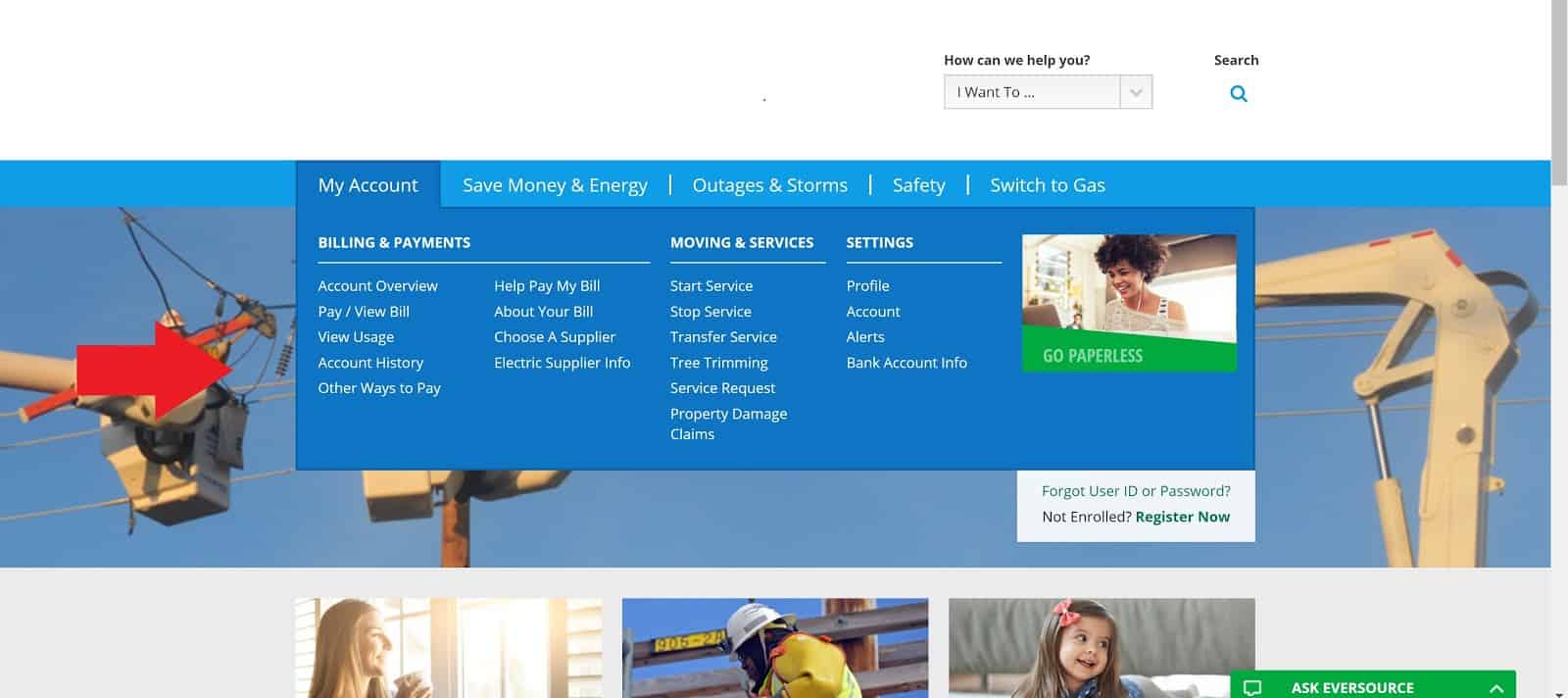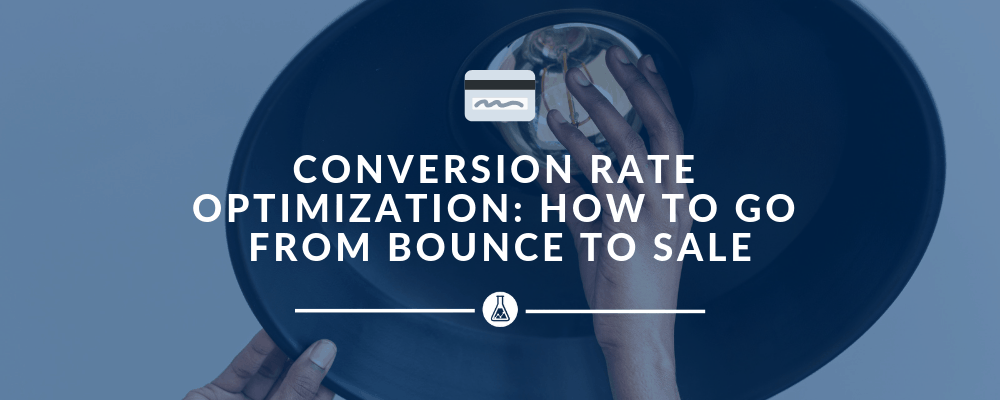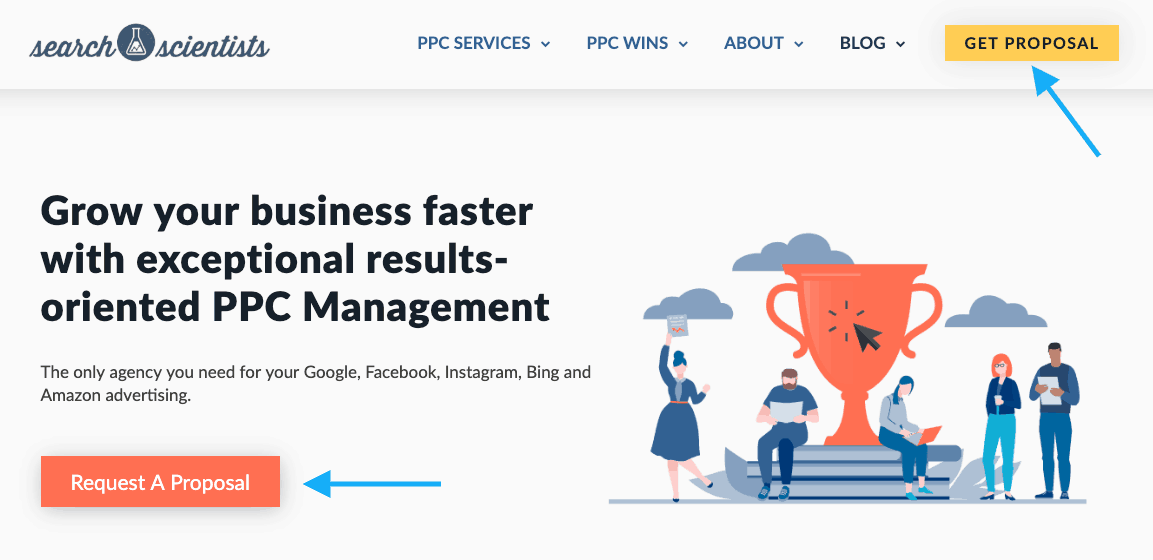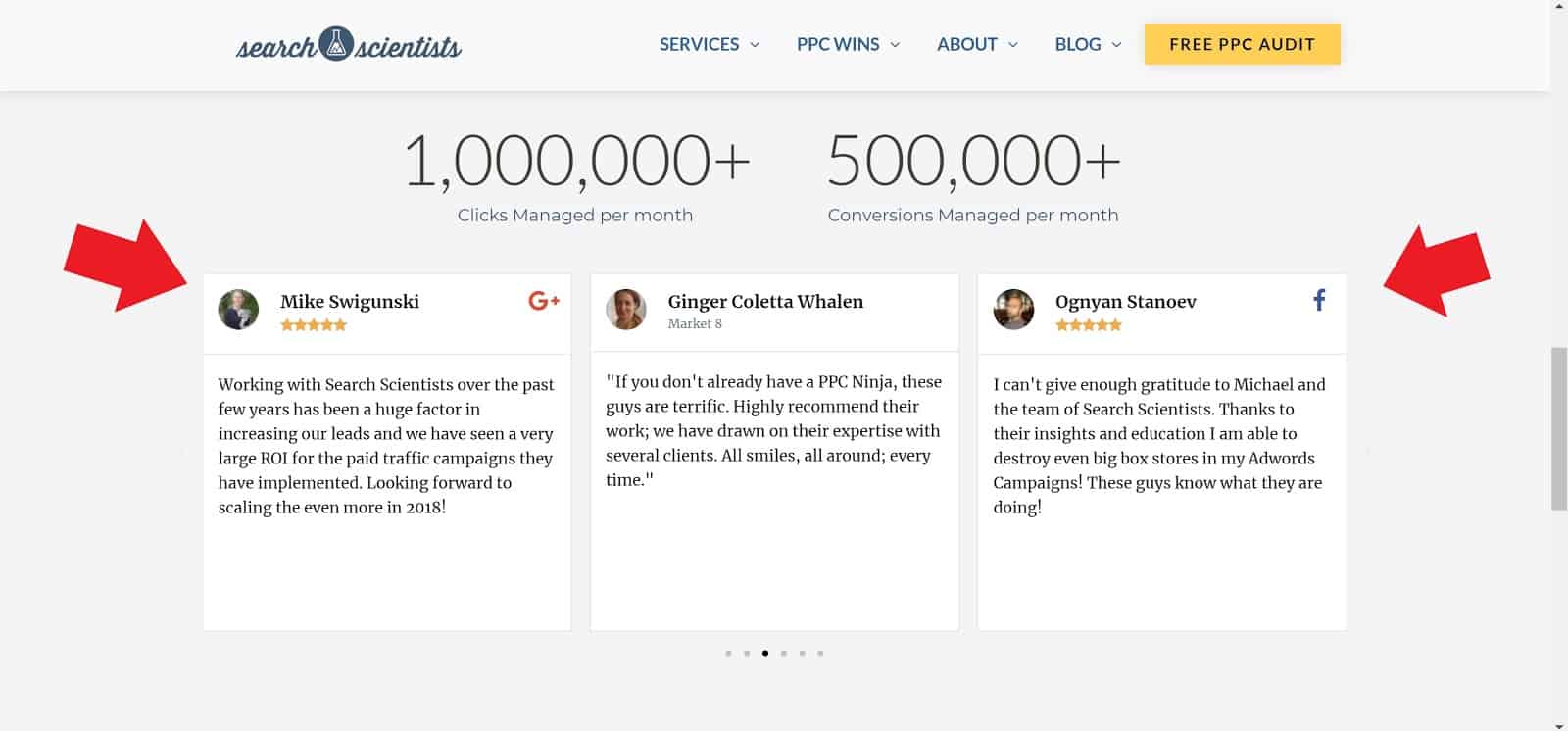You may have looked at your website’s analytics data lately and found a frustrating trend. People are visiting, but they’re not filling out your lead form, or calling, or buying (depending on what you do). On the surface, you feel like your website is compelling, helpful, and to the point, but it’s just not converting. A low website conversion rate means your site isn’t doing its job, but how do you fix it?
You need conversion rate optimization or CRO!
Read on, we’re talking about seven valuable strategies that you can use for improving your website’s conversion rate.
What is a Conversion, after all?
As you know, a conversion is when someone performs a goal action on your site. Most of us think about conversions in terms of bottom of the funnel conversions like a purchase, phone call, or form fill. The truth of the matter is a well-rounded marketing strategy has conversions that are appropriate for every step in the funnel. They can run the gambit from a small action like a newsletter signup to a large action like a yearlong subscription.
Micro-Conversions Versus Macro-Conversions
Not all conversions carry the same weight. Just like everything else in life they come in all sorts of sizes. Conversions are measured based on intent, and micro-conversions have less importance than macro-conversions.
Think about a micro-conversion as a low commitment action. Signing up for a newsletter or watching a video on your site are great examples of this. It’s basically a step on the way to completing your primary goal – gaining a lead or customer.
A macro-conversion, on the other hand, is the whole enchilada – the thing you’re going for. A macro-conversion is a purchase, an appointment, or lead form submission. It’s a more significant commitment, a bigger ask of the user.
OKAY, So What is MY WEBSITE Conversion Rate?
Now that you know what a conversion is, you might want to know how to find your website’s Conversion Rate. You can do this by using a little math.
Conversion Rate = Conversions ÷ Sessions/Users (number of visits/users to the site) X 100.
What is CRO: Conversion Rate Optimization?
Moz defines CRO as:
"the systematic process of increasing the percentage of website visitors who take a desired action — be that filling out a form, becoming customers, or otherwise. The CRO process involves understanding how users move through your site, what actions they take, and what's stopping them from completing your goals."
In layman’s terms, it’s figuring out why someone doesn’t do what you’d like them to do on your website. It may sound easy, but it requires systematic testing and data analysis to produce results.
Getting Started with Conversion Rate Optimization
Not seeing the numbers you’d like to see? It doesn’t matter whether you want to completely overhaul a page or your whole website or just tune up a page.
The strategies you’ll use will be the same no matter how big, or small your job might be. The process is a lot of educated trial and error while analyzing your data, and sometimes even enlisting outside opinions to improve the user experience.
Begin by Setting a Baseline
First things first, you need a baseline before you can do anything. Much like you step on a scale before going on a diet, you should check your site’s vital stats before trying to make changes. Take a full assessment of your Google Analytics (or other tool you might use) from bounce rate to time on site. Take a peek at your attribution model as well, and make sure it’s right for your business model. It doesn’t make sense to try to improve things before you know what needs to be improved.
Now that you’re not flying blind, you can choose which metrics to focus on for your strategy and testing.
We live, breathe & Dream Paid Traffic
CRO Strategy 1 - Try a Custom Landing Page
The term landing page gets thrown around a lot these days, but in essence, a landing page is the page people end up on when they click on some form of marketing. This marketing can be an email, a social media post, or some type of paid search or paid social marketing. If you’re sending your marketing traffic to a regular old page on your site, you should consider a custom landing page.
These landing pages come with many benefits. You can take away all distractions like navigation, and ensure they’re laser-focused on your campaign’s goal. There are also other fantastic options like dynamic keyword insertion, so visitors can see their queries in the page content. Customization can be used to tailor your content to the user. When it comes to paying for traffic, you should think strategically about where you send it.
A/B Test your Landing Pages
Possibly the best option afforded to you by using a landing page to improve your conversion rate is A/B testing. Using a landing page will allow you to test different page variants with a test element. For instance, no one can help but click that big red button, right? Maybe… but let’s prove with data that your big red button works better. A/B testing page elements like button color, call to action, and certain offers will allow you to uncover the best combination for the highest conversion rate.
Behind the scenes tip: Google Optimize is an awesome free tool for A/B testing your landing pages. We’re probably optimizing our SearchScientists.com pages with Google Optimize as you’re reading this sentence.
CRO Strategy 2 - Simplify Your Navigation
There are many things you can do to optimize your website for conversions. Something many people tend to overlook is the navigation. If a user can’t find what they want, then there’s no way they’ll ever convert. Simplifying the navigation can go a long way towards increasing leads or purchases.
How many levels deep does your navigation go? If your navigation feels like Dante’s Inferno, you’re doing it wrong. Sure, you don’t want to create pages that are too long, but 10-level deep navigation doesn’t serve anyone either. The best way to lay things out is to make it an intuitive, simple path.

CRO Strategy 3 - Test Colors
Don’t let anyone tell you color doesn’t matter. Could you eat in a pink dining room? How about an orange bedroom? Okay, well maybe some of us can tolerate that, but not all of us. Do you have an established color palette? If not, now is the time to establish one. Take some time to learn more about color theory.
Think about your Call to Action buttons too. You’ll want to make them stand out. They should say “click me!” Remember, the objective is to make someone want to perform your goal action.
CRO Strategy 4 - Try Video
Try a change of pace with video. Impactbnd offers some stats that no business can afford to ignore, like:
● 72% of businesses say video has improved their conversion rate.
● 52% of consumers say that watching product videos makes them more confident in online purchase decisions
● 65% of executives visit the marketer’s website and 39% call a vendor after viewing a video.
What all of these numbers really mean is that using video is likely to have a positive impact on your conversion rate.
Video offers an explanation of your words and breaks up the endless sea of characters on the page. Much like images, it provides a much-needed respite as well as more information. You can show your product in use, offer additional details, show testimonials, or give product instructions. Remember, your video should remain short – 2-3 minutes – or you will have defeated the purpose of using a video.
[Speaking of video, the Search Scientists YouTube channel is full of goodies and waiting for you to subscribe ;)]
CRO Strategy 5 - Calls to Action
Are you telling your users what you’d like them to do? You’ve spent all of this time making your website look fabulous and improving your user experience, but have you told your users what you’d like them to do?
Wait! Before you say “yeah, my form says ‘Submit’,” stop yourself right there. It’s not compelling or exciting. Sure, it’s an action in the verb sense, but that’s about it. An appropriately-worded Call to Action could raise your conversion rate by more than 83%, according to Neil Patel. More importantly, it’s about psychology. We act on things because something drives us to do it. Plain and simple.
CRO Strategy 6 - Social Proof
Social proof has many forms, but we often see it as things like testimonials and product reviews. This proof connects people with your brand and instills trust. According to VWO, “70% of consumers say they trust opinions posted online.” Think about these social proofs as a form of personal referral for the modern age.
CRO Strategy 7 - Tweak Your Copy
Passive copy is boring and unengaging. Same as your ad copy, your website copy needs to have a specific structure to be effective. It should be short, easy to read, and broken up with plenty of headlines that allow for scanning. It shouldn’t contain a lot of unfamiliar jargon or complicated words.
All of your essential should be above the fold so that someone can find what they are looking for what they need quickly. Your copy must be benefits-focused, illustrating why prospective customers need your product or service. You want to convey facts, but you’ll need to become a storyteller.
CRO Strategy 8 – Guide the Eye, Lead the Journey
Picture this: You’re browsing an art gallery. Each piece has been carefully curated, strategically placed to catch your eye, guiding you from one masterpiece to the next.
You move effortlessly through the gallery, fully immersed in the experience. The art speaks to you because the journey is seamless.
Now, imagine your website as that gallery. Every element, from headlines to images, plays a role in guiding the visitor’s eye.
When you think about Conversion Rate Optimization (CRO), it’s easy to get caught up in technical details—A/B testing, metrics, and heatmaps. But at its heart, CRO is about storytelling.
Start with your layout.
- Where do you want your visitors to go?
- What do you want them to do?
Each choice, from the size and color of your buttons to the placement of your calls to action, should guide the eye in a way that feels intuitive.
Think of it as setting up a trail of breadcrumbs—a gentle, almost subconscious nudge in the right direction.
The content you choose to highlight is equally important. Your most compelling offer, your strongest testimonial—these should stand out, drawing the eye just as a spotlight draws attention to a piece of art.
Conversion Rate Optimization - Constantly weigh performance against data
Strategies to increase conversions are systematic and can be done on specific pages or across a whole site. They employ a mix of creativity and data analysis. Success isn’t measured by some arbitrary number; instead, you set your own goals based on metrics that make sense to your organization.
At the end of the day, you might ask yourself, “what does CRO mean?” The answer doesn’t have to be complicated. Conversion optimisation means the design of your website or landing page isn’t set in stone. You need to always be testing it, and weighing its performance against the data. Tools like Google Analytics, UserTesting, and Hotjar are your friends. Guesses are just too costly in the CRO marketing business. If you make a user want to take an action, really crave it, they will.
Now that you’re armed with the strategies, go start optimizing your website!
Frequently Asked Questions
What is Conversion Rate Optimization (CRO)?
CRO is the process of improving your website or landing page to increase the percentage of visitors who take a specific action, such as making a purchase or filling out a form.
Why is CRO important for my business?
CRO helps you maximize the value of your existing website traffic by converting more visitors into customers, leading to increased revenue and better business performance.
How do I know if my website needs CRO?
If you’re getting traffic to your site but not seeing enough conversions (sales, sign-ups, etc.), it’s a sign that your site may benefit from CRO.
What are common elements to optimize in CRO?
Common elements include headlines, calls to action, page layout, forms, images, and overall user experience.
How long does it take to see results from CRO?
The time to see results can vary, but many businesses start noticing improvements within a few weeks to a few months after implementing CRO strategies.












